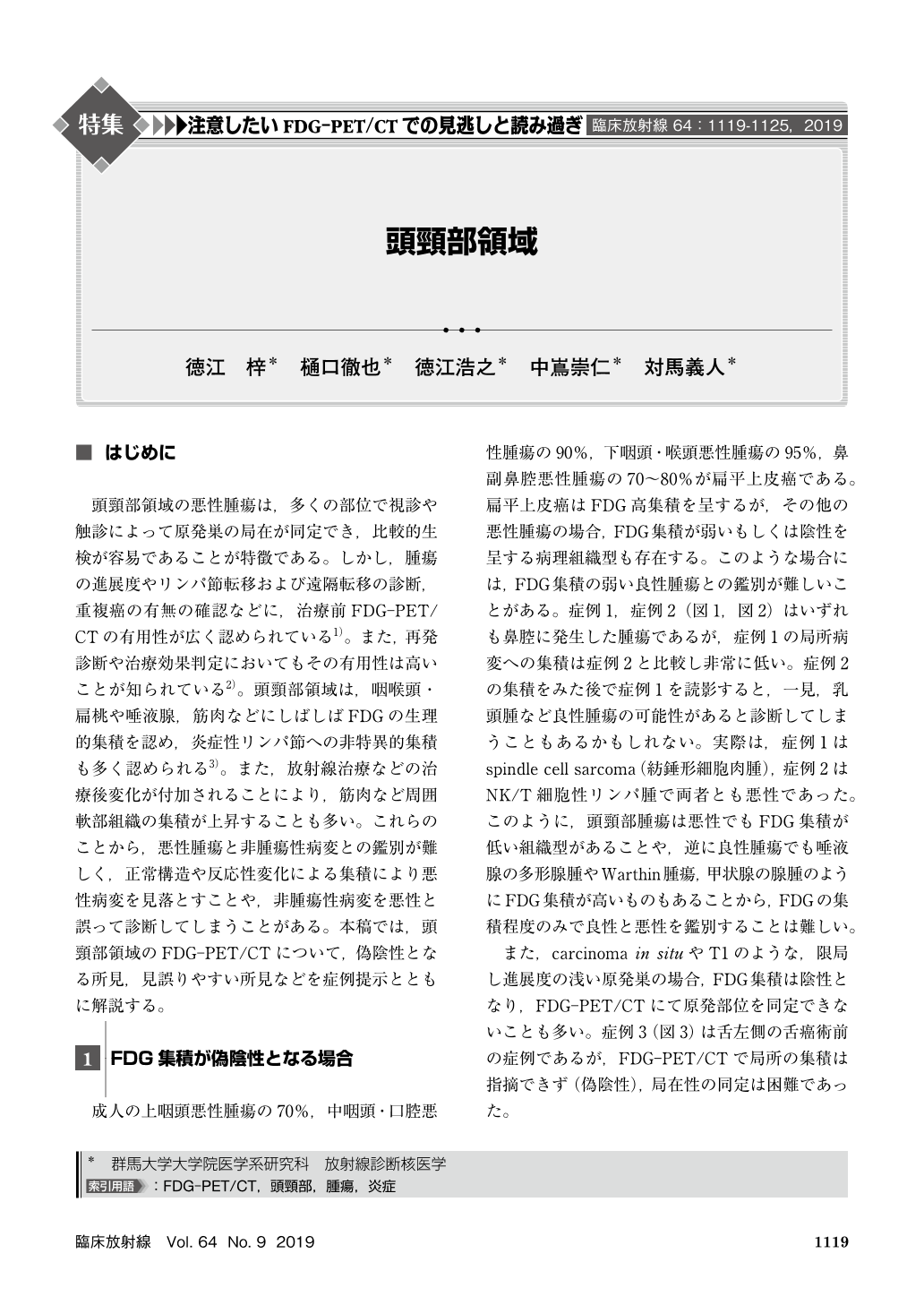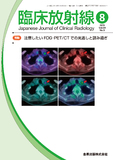Japanese
English
- 有料閲覧
- Abstract 文献概要
- 1ページ目 Look Inside
- 参考文献 Reference
頭頸部領域の悪性腫瘍は,多くの部位で視診や触診によって原発巣の局在が同定でき,比較的生検が容易であることが特徴である。しかし,腫瘍の進展度やリンパ節転移および遠隔転移の診断,重複癌の有無の確認などに,治療前FDG-PET/CTの有用性が広く認められている1)。また,再発診断や治療効果判定においてもその有用性は高いことが知られている2)。頭頸部領域は,咽喉頭・扁桃や唾液腺,筋肉などにしばしばFDGの生理的集積を認め,炎症性リンパ節への非特異的集積も多く認められる3)。また,放射線治療などの治療後変化が付加されることにより,筋肉など周囲軟部組織の集積が上昇することも多い。これらのことから,悪性腫瘍と非腫瘍性病変との鑑別が難しく,正常構造や反応性変化による集積により悪性病変を見落とすことや,非腫瘍性病変を悪性と誤って診断してしまうことがある。本稿では,頭頸部領域のFDG-PET/CTについて,偽陰性となる所見,見誤りやすい所見などを症例提示とともに解説する。
FDG-PET/CT is widely used for the diagnosis of head and neck lesion. The usefulness of FDG PET/CT is known for a recurrence diagnosis and the curative effect judgment of head and neck tumor. The physiological accumulation of FDG to laryngopharynx, salivary gland and muscles is frequently seen. Moreover, we often see inflammatory FDG accumulation for lymph node. Therefore, the differentiation of malignant tumor and non-malignant lesion is difficult. Some cases are misdiagnosed by the accumulation of normal structure and the reactive change. It may occur overestimation of FDG accumulation for non-malignant lesion. In this report, we present some cases of FDG-PET/CT in the head and neck region that is difficult to distinguish malignancy and non-malignancy.

Copyright © 2019, KANEHARA SHUPPAN Co.LTD. All rights reserved.


